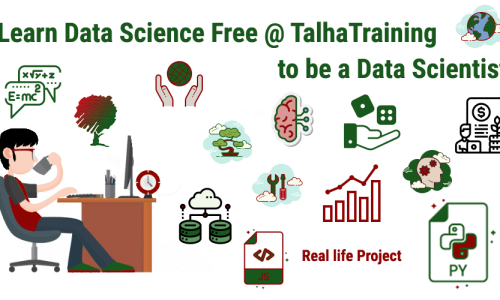
Curriculum
Overview
What is manual testing?
Manual testing is a type of software testing where testers manually execute test cases without using any automation tools. In manual testing, testers carefully follow a set of predefined test cases, exploring various aspects of the software to identify defects or areas of improvement.
The benefit of learning manual testing.
Learning manual testing is invaluable for a tester’s career. It establishes a strong foundation in testing principles, enabling testers to effectively identify and report defects. Manual testing hones critical thinking, problem-solving, and communication skills, making testers adept at uncovering nuanced issues and collaborating with development teams. It also complements automated testing efforts, ensuring comprehensive test coverage. Moreover, manual testing is adaptable, cost-effective, and applicable across various domains, providing versatile skills essential for a successful testing career.
This course is designed to equip you with the skills needed to perform manual testing effectively and also provides guidance on how to start earning online as a tester. Remember to practice regularly and consider taking on small projects to build your portfolio and gain experience.
Each module includes lectures, hands-on exercises, assignments, assessments, and practical projects to ensure a comprehensive learning experience.
Module 1: Introduction to Software Testing
- Overview of Software Testing
- Importance of Software Testing
- Types of Testing (Manual vs. Automated)
Module 2: Software Development Life Cycle (SDLC) and Testing
- Understanding SDLC phases
- Role of Testing in each SDLC phase
- Importance of early testing
Module 3: Software Testing Life Cycle (STLC)
- Requirements Analysis
- Test Planning
- Test Design
- Test Execution
- Defect Reporting
- Test Closure
Module 4: Test Planning and Documentation
- Test Strategy and Test Plan
- Test Cases and Test Scenarios
- Traceability Matrix
- Test Data Preparation
- Test Environment Setup
Module 5: Functional Testing
- Black Box Testing Techniques
- Equivalence Partitioning
- Boundary Value Analysis
- Decision Table
- State Transition Diagram
- White Box Testing Techniques
- Statement Coverage
- Branch Coverage
- Path Coverage
Module 6: Non-Functional Testing
- Performance Testing
- Load Testing
- Stress Testing
- Usability Testing
- Compatibility Testing
- Security Testing
Module 7: Regression Testing
- Purpose of Regression Testing
- Regression Test Selection
- Regression Test Automation
Module 8: Defect Reporting and Tracking
- Defect Life Cycle
- Severity vs. Priority
- Defect Logging and Documentation
- Defect Tracking Tools
Module 9: Test Execution and Reporting
- Test Execution Process
- Test Execution Logs
- Status Reporting
- Metrics and Measurements
Module 10: Test Closure and Sign-off
- Exit Criteria
- Test Summary Report
- Lessons Learned
- Closure Activities
Module 11: Introduction to Agile Testing
- Agile Methodologies (Scrum, Kanban, etc.)
- Testing in Agile Projects
- Roles and Responsibilities in Agile Teams
Module 12: Specialized Testing Techniques
- User Acceptance Testing (UAT)
- Exploratory Testing
- Ad Hoc Testing
Module 13: Test Management Tools
- Introduction to Test Management Tools – Jira
- Hands-on experience with a popular test management tool
Module 14: Real-world Case Studies and Projects
- Applying learned concepts to real-world scenarios
- Working on sample projects
Module 15: Freelancing and Earning Online
- Introduction to Freelancing Platforms
- Creating a Freelancer Profile
- Finding and Bidding on Testing Projects
- Communication and Client Interaction
Module 16: Building a Portfolio
- Showcasing Your Testing Skills
- Creating a Portfolio Website or Profile
- Highlighting Projects and Achievements
Module 17: Interview Preparation and Resume Building
- Common Interview Questions for Manual Testers
- Resume Writing Tips for Testers
Module 18: Emerging Trends in Testing
- Continuous Integration/Continuous Deployment (CI/CD)
- DevOps and Testing
- Shift-Left Testing
Module 19: Future Directions and Certifications
- Exploring advanced testing certifications (e.g., ISTQB, CSTE)
- Keeping up with industry trends
Module 20: Marketing Your Testing Services
- Building a Personal Brand as a Tester
- Networking and Building Professional Relationships
- Tips for Success in Freelancing
Certificates will be awarded to participants at the end of training.
Seats are limited. To confirm your enrollment, pay the course fee @
| A/C Name: | TalhaTraining |
| A/C No.: | 2141116000973 |
| Bank Name: | Prime Bank Limited |
And mail us after paying the course fee.
For registration or information please call or contact any of the following addresses
TalhaTraining
Mobile & WhatsApp: +8801712742217
Email: training@talhatraining.com or talhatraining@gmail.com
Website: talhatraining.com; hostbari.com
Follow us on Facebook Google LinkedIn Twitter Instagram YouTube
Course Features
- Lectures 74
- Quiz 0
- Duration 16 hours
- Skill level All levels
- Language English
- Students 0
- Certificate Yes
- Assessments Yes








